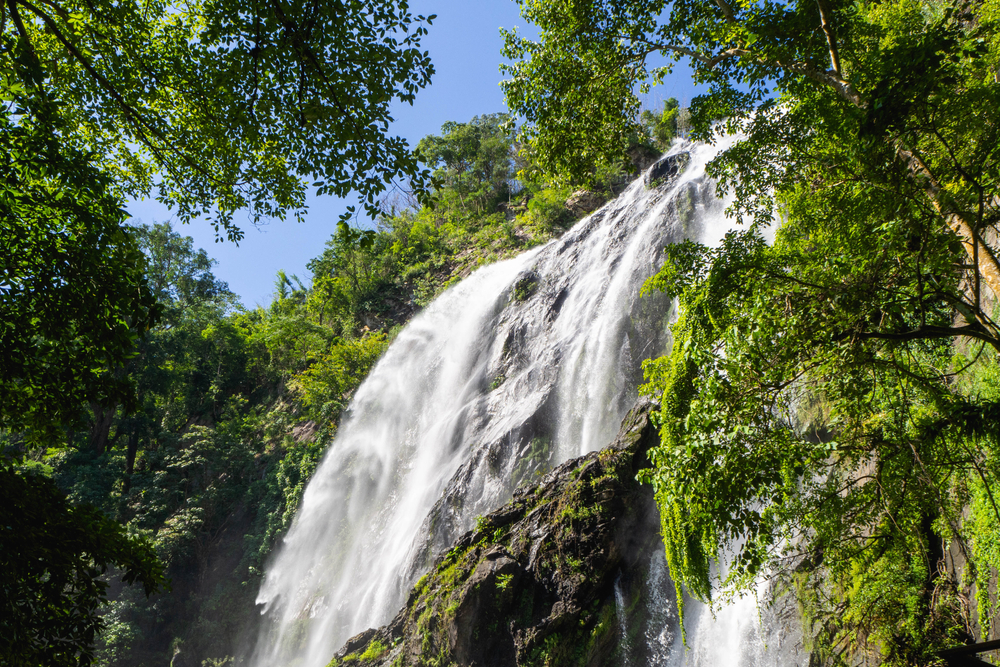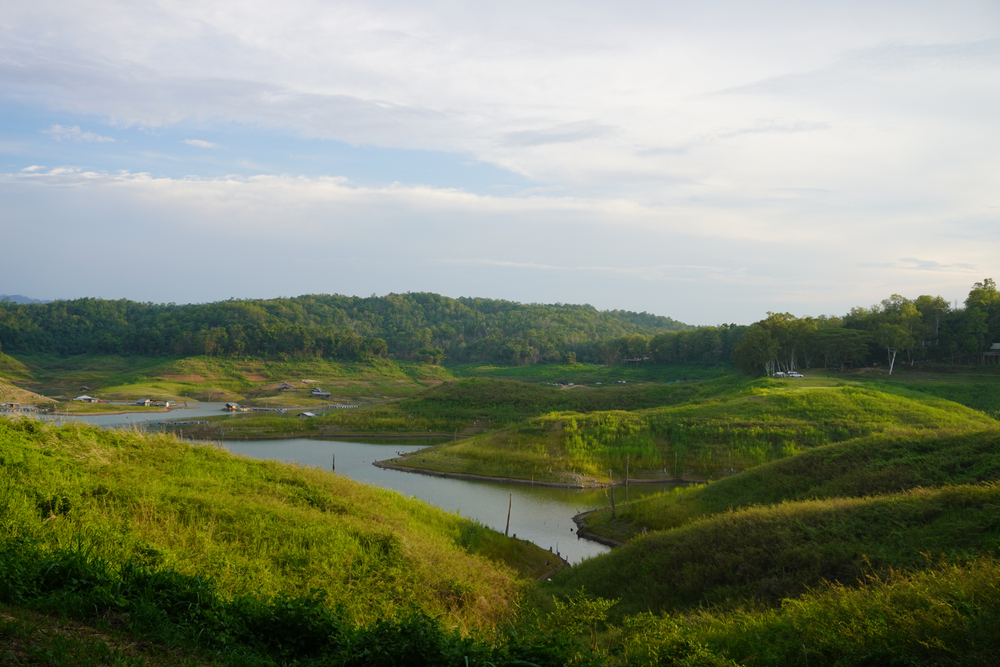Namtok Phlio Overview
Namtok Phlio National Park, known locally as อุทยานแห่งชาติน้ำตกพลิ้ว (Uthayan Haeng Chat Namtok Phlio), is a breathtaking natural treasure located in Chanthaburi Province, eastern Thailand. Covering an area of approximately 52 square miles (134 square kilometers), this park is renowned for its verdant landscapes, rich biodiversity, and cultural significance. Situated close to the Gulf of Thailand, its proximity to the coast lends the park a unique ecosystem, blending lush rainforest with cascading waterfalls and serene streams.
The terrain of Namtok Phlio National Park is a mix of rugged hills, dense forest, and winding rivers. The park’s centerpiece is the stunning Phlio Waterfall, a multi-tiered cascade that flows into a clear pool teeming with fish, including the mahseer barb, a species revered by locals and visitors alike.
The surrounding forest is characterized by a variety of vegetation, including towering hardwoods, bamboo groves, and an undergrowth of ferns and orchids. Other notable features include Khao Sa Bap, the highest peak in the park, offering panoramic views of the surrounding landscape.
The park is a haven for wildlife enthusiasts. Mammals such as barking deer, palm civets, and macaques roam the forest, while an array of bird species, including hornbills, Asian fairy-bluebirds, and drongos, create a symphony of sounds in the treetops. The vibrant ecosystem also supports reptiles like monitor lizards and a variety of amphibians, further underscoring the park’s ecological richness. The thriving aquatic life, particularly around the waterfalls, adds another layer of fascination for nature lovers.
Visitors to Namtok Phlio National Park are drawn to its serene beauty and tranquil ambiance. The Phlio Waterfall is undoubtedly the most popular attraction, where visitors can swim alongside schools of fish in the cool, crystal-clear waters. The King Rama V Memorial, located near the waterfall, is a historical landmark that commemorates the park’s royal heritage, adding a cultural dimension to its natural appeal. Trails meander through the park, inviting hikers to explore its lush depths and discover hidden waterfalls, streams, and scenic vistas.
Tourists can engage with the park in various ways, including hiking, birdwatching, swimming, and photography. Picnicking near the waterfall is a favorite pastime, while nature trails provide opportunities to immerse oneself in the serene forest environment. Guided tours offer deeper insights into the park’s flora, fauna, and history, making the experience even more enriching.
Despite its beauty, Namtok Phlio National Park faces challenges such as habitat encroachment and littering from increased visitation. However, ongoing conservation efforts, including community education programs and strict waste management policies, have helped protect its natural and cultural heritage. Local communities and park authorities work collaboratively to maintain the park’s ecological balance, ensuring it remains a sanctuary for generations to come.



















































































